Tom Mix Museum [OK]
The Museum houses items from actor Tom Mix's personal collection, providing a glimpse into the life of one of Oklahoma's famous figures.
The museum offers exhibits.
The Museum houses items from actor Tom Mix's personal collection, providing a glimpse into the life of one of Oklahoma's famous figures.
The museum offers exhibits.
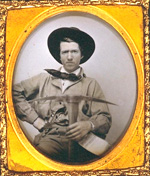
This archive provides more than 81,000 images and 1,000 texts on the history and culture of California. Images may be searched by keyword or browsed according to six categories: history, nature, people, places, society, and technology. Topics include exploration, Native Americans, gold rushes, and California events.
Three collections of texts are also available. Japanese American Relocation Digital Archive furnishes 309 documents and 67 oral histories. Free Speech Movement: Student Protest, U.C. Berkeley, 19641965 provides 541 documents, including books, letters, press releases, oral histories, photographs, and trial transcripts.
UC Berkeley Regional Oral History Office offers full-text transcripts of 139 interviews organized into 14 topics including agriculture, arts, California government, society and family life, wine industry, disability rights, Earl Warren, Jewish community leaders, medicine (including AIDS), suffragists, and UC Black alumni.
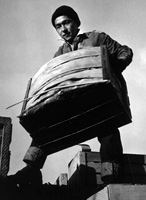
During World War II, the U.S. Government forced more than 100,000 Japanese Americans to leave their homes and businesses, relocating them to internment camps from California to Arkansas. Well-known photographer Ansel Adams documented the lives of Japanese Americans at the Manzanar War Relocation Center in California—from portraits to daily life, including agriculture and leisure.
This site presents 242 original negatives and 209 photographic prints, often displayed together to show Adams's developing and cropping techniques. His 1944 book on Manzanar, Born Free and Equal is also reproduced. Adams donated the collection to the Library of Congress in 1965, writing, "The purpose of my work was to show how these people, suffering under a great injustice . . . had overcome the sense of defeat and dispair [sic] by building for themselves a vital community in an arid (but magnificent) environment."
Scholars in Action presents case studies that demonstrate how scholars interpret different kinds of historical evidence. This untitled daguerreotype of Niagara Falls was taken in 1853 by Platt Babbitt and reflects an era when the expansion of railroads and the rise of middle-class occupations enabled some Americans to enjoy leisure travel.
The daguerreotype process, the earliest form of photography, involved the painstaking manipulation of light, chemicals, and copper plates. Daguerreotypes were made public in 1839 and quickly became a popular medium in the United States for a growing middle class eager to document themselves and their surroundings. While daguerreotypes could not be mass produced, they often served as the basis for newspaper illustrations that reached large numbers of Americans.
Eighth-grade American history educator Eric Langhorst introduces an interactive Smithsonian website on the Star-Spangled Banner, suggesting it as a classroom resource for studying the War of 1812.

These published works, manuscripts, images, and motion picture footage address the formation of the movement to conserve and protect America's natural heritage. Materials include 62 books and pamphlets, 140 Federal statutes and Congressional resolutions, 34 additional legislative documents, and excerpts from the Congressional Globe and the Congressional Record. An additional 360 presidential proclamations, 170 prints and photographs, two historic manuscripts, and two motion pictures are available.
Materials include Alfred Bierstadt paintings, period travel literature, a photographic record of Yosemite, and Congressional acts regarding conservation and the establishment of national parks. An annotated chronology discusses events in the development of the conservation movement with links to pertinent documents and images.
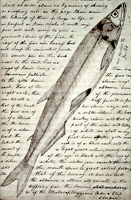
This well-designed site presents the Nebraska edition of the Lewis and Clark journals, edited by Gary E. Moulton. The site provides the complete text of all the journals from the 18031806 expedition, as well as introductions, prefaces, and sources. The material is searchable by keyword and phrase.
There are 29 scholarly essays about the expedition. An image gallery offers 124 images of pages from the journals, 95 images of people and places, and 50 images of plants and animals encountered on the expedition. The maps section includes 12 explanatory maps and nine images of maps from the journals. Additionally, there are 27 audio excerpts of journal readings and eight video interviews with the editor of the project. The website stands as an outstanding resource for researching the history of the Lewis and Clark expedition.
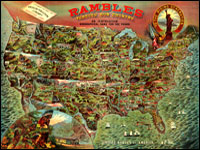
This private collection presents more than 15,800 rare historical maps with a focus on North and South America. The collection is accessible via several formats. A standard browser (the "directory") is designed for use by the general public. In addition to two browsers and a "collections ticker" requiring Insight software (available for free download), a GIS browser shows detailed overlays of maps and geospatial data for the more serious researcher.
Many of the U.S. maps are from the late 19th and early 20th centuries and are often notable for their craftsmanship. Materials include atlases, globes, books, maritime charts, pocket and wall maps, and children's maps. Users can zoom in to view details. Overlay capabilities make this site valuable for its ability to convey how locations have changed over time.
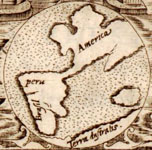
This large collection of maps from the 16th century to the present day focuses on Americana and cartographic treasures.
Materials are organized into seven thematic categories—Cities and Towns, Conservation and Environment, Discovery and Exploration, Cultural Landscapes, Military Battles and Campaigns, Transportation and Communication, and General Maps. Sections include five special presentations.
Users may download maps or zoom in to view details. Seventeen specific map collections contained within this larger site that are of particular importance for the study of American history include "Discovery and Exploration," "The American Revolution and Its Era," "Railroad Maps, 18281900," "American Colonization Society Collection: Maps of Liberia, 18301870," "Panoramic Maps, 18471929," "Civil War Maps," and "Mapping the National Parks."
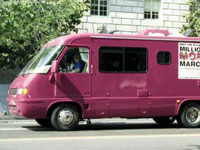
A collection of articles and photographs by Jo Freeman, feminist activist, analyst, reporter, and political consultant from the 1960s to the present-day. Offers more than 70 articles—most of which have been published previously—arranged in 13 categories. These include the feminist movement; women's political history; women, law, and public policy; and social protest in the 1960s. Freeman, who worked on the Senator Alan Cranston 's campaign staff during his 1984 run for president, also offers her diary that reveals day-to-day details of campaign life. Freeman's recent writings for Senior Women Web offer her perspectives on current issues.
Also includes more than 40 photographs taken by Freeman at the Democratic conventions of 1964 and 1968; the 1966 "March against Fear," led by James Meredith; Eugene McCarthy's 1968 presidential campaign; and flags displayed at Brooklyn locations in response to the September 11, 2001, attacks. A 2,300-word biographical essay by historian Jennifer Scanlon provides a cogent summary of Freeman's public life and thought. The site is word-searchable and provides 30 links to politically-oriented sites. Of interest to those studying U.S. women's history and political activism since the 1960s.